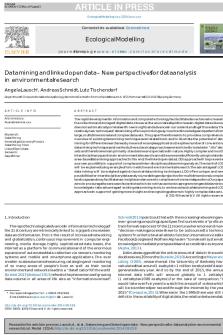Vapply and Tapply in Rstudio Data Analysis PDF

| Title | Vapply and Tapply in Rstudio Data Analysis |
|---|---|
| Author | Júlia López |
| Course | Data Analysis |
| Institution | Universitat Pompeu Fabra |
| Pages | 3 |
| File Size | 231.6 KB |
| File Type | |
| Total Downloads | 70 |
| Total Views | 142 |
Summary
Vapply and Tapply in Rstudio Data Analysis from the 1st trimestre...
Description
Vapply and tapply Whereas sapply() tries to 'guess' the correct format of the result, vapply() allows you to specify it explicitly. If the result doesn't match the format you specify, vapply() will throw an error, causing the operation to stop. This can prevent significant problems in your code that might be caused by getting unexpected return values from sapply(). Vapply -
Try vapply(flags, unique, numeric(1)), which says that you expect each element of the result to be a numeric vector of length 1. Since this is NOT actually the case, YOU WILL GET AN ERROR. Once you get the error, type ok() to continue to the next question.
-
If we wish to be explicit about the format of the result we expect, we can use vapply(flags, class, character(1)). The 'character(1)' argument tells R that we expect the class function to return a character vector of length 1 when applied to EACH column of the flags dataset. Try it now.
Comment: Note that since our expectation was correct (i.e.character(1)), the vapply() result is identical to the sapply() result -- a character vector of column classes. Tapply You'll often wish to split your data up into groups based on the value of some variable, then apply a function to the members of each group. The next function we'll look at, tapply(), does exactly that. The 'landmass' variable in our dataset takes on integer values between 1 and 6, each of which represents a different part of the world. -
Use table(flags$landmass) to see how many flags/countries fall into each group.
The 'animate' variable in our dataset takes the value 1 if a country's flag contains an animate image (e.g. an eagle, a tree, a human hand) and 0 otherwise. -
Use table(flags$animate) to see how many flags contain an animate image.
Vapply and tapply Commentary: This tells us that 39 flags contain an animate object (animate = 1) and 155 do not (animate = 0). If you take the arithmetic mean of a bunch of 0s and 1s, you get the proportion of 1s. -
Use tapply(flags$animate, flags$landmass, mean) to apply the mean function to the 'animate' variable separately for each of the six landmass groups, thus giving us the proportion of flags containing an animate image WITHIN each landmass group.
Commentary: The first landmass group (landmass = 1) corresponds to North America and contains the highest proportion of flags with an animate image (0.4194). -
Similarly, we can look at a summary of population values (in round millions) for countries with and without the color red on their flag with tapply(flags$population, flags$red, summary).
Lastly, use the same approach to look at a summary of population values for each of the six landmasses.
Vapply and tapply...
Similar Free PDFs

Programació en R vapply i tapply
- 3 Pages

Graphing and data analysis
- 7 Pages

Data and error analysis
- 9 Pages

Rstudio - glossary and tips
- 3 Pages

DAnotes - Data and Analysis notes
- 38 Pages

comandos RStudio
- 2 Pages

DATA Analysis
- 3 Pages

RStudio Cheat Sheet
- 6 Pages

8 DATA Analysis AND Report Writing
- 10 Pages
Popular Institutions
- Tinajero National High School - Annex
- Politeknik Caltex Riau
- Yokohama City University
- SGT University
- University of Al-Qadisiyah
- Divine Word College of Vigan
- Techniek College Rotterdam
- Universidade de Santiago
- Universiti Teknologi MARA Cawangan Johor Kampus Pasir Gudang
- Poltekkes Kemenkes Yogyakarta
- Baguio City National High School
- Colegio san marcos
- preparatoria uno
- Centro de Bachillerato Tecnológico Industrial y de Servicios No. 107
- Dalian Maritime University
- Quang Trung Secondary School
- Colegio Tecnológico en Informática
- Corporación Regional de Educación Superior
- Grupo CEDVA
- Dar Al Uloom University
- Centro de Estudios Preuniversitarios de la Universidad Nacional de Ingeniería
- 上智大学
- Aakash International School, Nuna Majara
- San Felipe Neri Catholic School
- Kang Chiao International School - New Taipei City
- Misamis Occidental National High School
- Institución Educativa Escuela Normal Juan Ladrilleros
- Kolehiyo ng Pantukan
- Batanes State College
- Instituto Continental
- Sekolah Menengah Kejuruan Kesehatan Kaltara (Tarakan)
- Colegio de La Inmaculada Concepcion - Cebu






